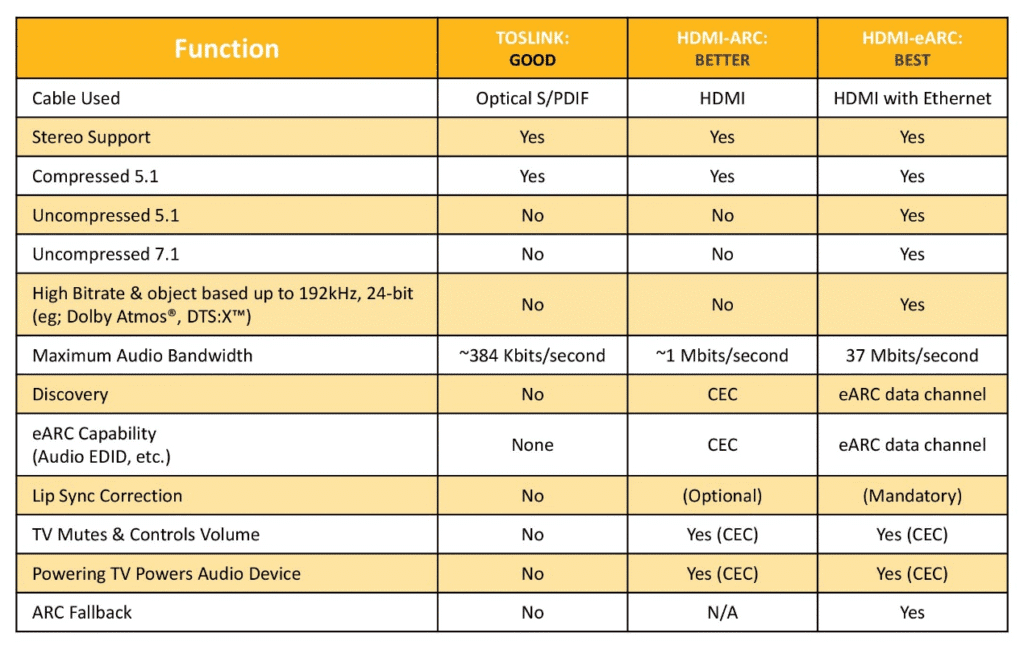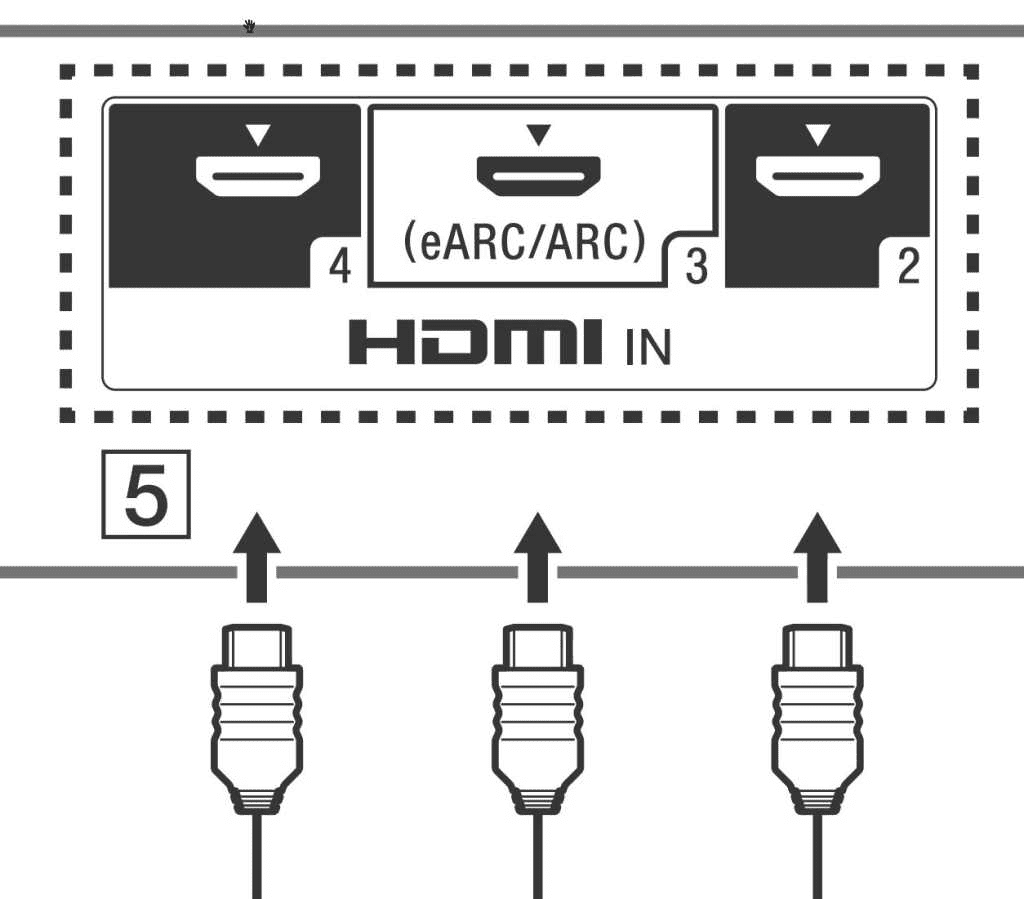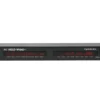What Is HDMI ARC and HDMI eARC
HDMI ARC and eARC are the easiest way to connect a TV and Amplifier
| HDMI Standard | Supported Models |
|---|---|
| HDMI ARC | Ultra, Plus, Max, Ultra-GC, Plus-GC |
| HDMI eARC | AVR-16200 |
What is HDMI ARC
ARC, which stands for “Audio Return Channel,” is a feature that many people might not be fully aware of. It was introduced with the HDMI 1.4 standard back in 2009 and has since become a standard feature in modern TVs, soundbars, multi-room streaming amplifier, and A/V receivers.
The key advantage of ARC is that it allows for two-way communication between devices using just a single HDMI cable. Essentially, it enables the HDMI port to function as both an input and an audio output. This means you can send audio from your TV to an external sound system (like a soundbar or A/V receiver, or multi-room streaming amplifier) without needing a separate audio cable.
Today, ARC is widely supported across a variety of devices. You’ll find it on almost all modern TVs and high-quality amplifier, including models like the HOLOWHAS Ultra and the Sonos Amp. Since ARC is part of the HDMI 1.4 standard, any device that supports HDMI 1.4 should theoretically support ARC.

However, it’s always a good idea to double-check the documentation for your specific devices to confirm compatibility. While the vast majority of TVs released after the HDMI 1.4 standard was introduced do support ARC, there might still be a few exceptions. Overall, ARC has become a very common and useful feature for simplifying home theater setups.
First, you can connect your audio system with a single HDMI cable. Connect your soundbar to the TV using the designated ARC-capable port, and you can use it for every device that connects to the TV, including Blu-ray players, game consoles and other devices. And it does that through the TV itself, instead of requiring a separate audio receiver.

The upgrade: HDMI 2.1 with eARC
When HDMI 2.1 was introduced in 2018, it brought significant upgrades to the world of home entertainment, including enhanced capabilities for audio and video. One of the key advancements was the introduction of the Enhanced Audio Return Channel (eARC), which is the successor to the original Audio Return Channel (ARC) found in earlier HDMI versions.
HDMI 2.1 offers several benefits, such as higher bandwidth to support higher resolutions and frame rates, as well as exciting features like automatic game modes. However, one of the most notable improvements is the enhanced audio capabilities provided by eARC.
The primary advantage of eARC is its ability to support full-resolution audio signals. This means it can handle high-quality, uncompressed audio formats like Dolby Atmos and DTS:X, delivering a more immersive and detailed audio experience compared to the original ARC. With eARC, users can enjoy the full potential of modern audio technologies without compromising on sound quality.
In summary, while HDMI 2.1 has revolutionized video performance, its advancements in audio, particularly through eARC, have also made it a game-changer for home theaters and gaming setups.

AVR-16200 from OpenAudio support multiple eARC, which can support Dolby ATMOS and HoloSound Bitsteam.






